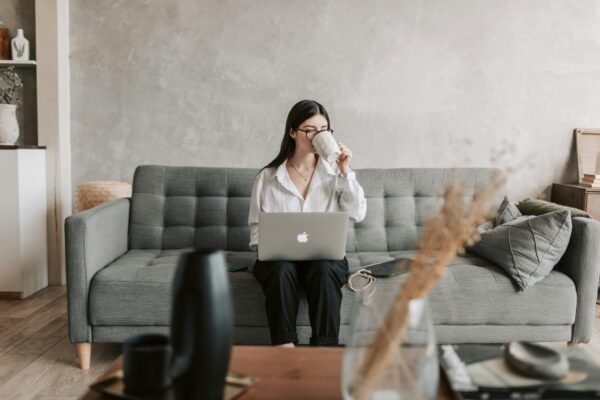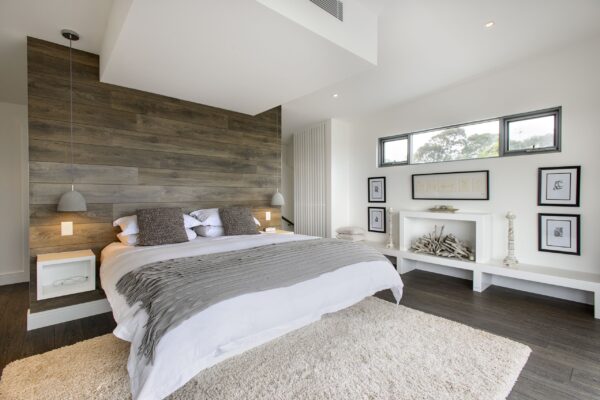
The Five Things You Need for the Perfectly Productive Home Office

Working from home is a standard for many people nowadays. As technology develops we can telecommute from home to save the journey into work, or to allow us more flexibility to work around appointments and childcare commitments. So whether you’ve set up shop at home permanently or you need a quiet haven to retreat to when you’re not in the office, YES Glazing has five things you need to think about for a perfectly productive home office.
1. The chair
When you work from home it can be incredibly tempting to set up shop on the couch in front of the TV, on your bed or at your dining room table. While some of these are good temporary solutions, they don’t make for a productive work at home environment; each of these places has their own purpose and you can get easily distracted in a place that isn’t specifically for work.
You’re going to want to choose a chair that is the right height for your desk and you, is comfortable, and provides proper back and arm support.
Tom Bourlet, Marketing Consultant for The Stag Company, says the first place he started was with his chair as he works completely from home:
“You will be spending a huge amount of time sat down and unfortunately you won’t have the big budgets of giant companies to invest in a high quality chairs. But it should still be a heavily considered cost. I strongly believe that any chair under £100 you will probably regret further down the line and find yourself buying a replacement. Spend extra and you will find yourself happily sitting all day in your chair without any back pain or frustration.”
2. The lighting
Thinking of just flicking on a light switch and starting your work? Think again. The lighting in your office can have a huge impact on your productivity and your wellbeing, and the road to improvement may actually mean turning the lights off.
“Natural light is the best way to go,” says Tom Ellis, Managing Director of YES Glazing. “Not only will it not cost you a penny but it’s also much better for your mental health. A survey conducted by Future Workplace showed that 43% of people felt gloomy because of the lack of natural light, and 47% felt very tired.
“So if you’re going to let some light in, make sure it’s as natural as possible. Set up your desk so that it’s in front of a big wide window, preferably south-facing if you can manage it. If that’s not possible, or it is but you find your office getting a little dark in the late afternoon, opt for soft and warm bulbs that replicate the outside light rather than harsh fluorescents.”
The placement of any light is also incredibly important. To reduce eye strain, optimum light placement is directly over your ready area, above the computer and behind you, as this ensures there’s no glare or reflection off your computer monitor. Your computer should also be placed a comfortable distance from your chair; you shouldn’t have to strain or hunch to reach the keyboard but also not need to squint or use reading glasses.
3. The desk
This is where you’ll be spending the vast majority of your day so make sure it’s a good place to be! In fact, Nick Pollitt, Managing Director at office furniture suppliers, Diamond Interiors, believes the desk should take pride of place:
“Your desk is a key element to your home office; it’ll help pull the rest of the room together and will also act as a focal point that draws the eye. And it’s going to be an important part of your productivity levels. So take your time and choose something that is going to be a good place to work for a long time. No matter what you go for, make sure it’s large enough to fit everything you need within arm’s reach, and sits at the right height for you to work comfortably.”
If you find yourself quite limited on office space, it’s time to whip out the old paper and pencil. Draw out a rough floor plan on graph paper and take some measurements of the space available and the sizes of furniture you’re working with. Make the most of the space you have by installing shelves above your desk or an under desk mobile or desk height fixed pedestal.
4. The layout
Now we come onto the layout of what’s actually on your desk. Of course it’s only natural to want things close to hand, but what you don’t need every day is surprising. No doubt you’ve heard the phrase “tidy desk, tidy mind”, and it’s true! Clutter can be incredibly distracting and can stop you from being productive. Instead, get yourself organised and sort through your supplies and put anything extra into a drawer.
Use ergonomics in your favour to make working easier and much more comfortable. If you like to put your feet up, then consider investing in a small footstool. Around 10” high should do and it should be placed under your desk. A slide-out keyboard holder is always a good idea for keeping your keyboard at the right height, and choose a mouse mat that provides wrist cushioning and isn’t too far out of reach.
5. The working day
Now you’ve got your surroundings set up exactly the way you want them, it’s time to turn your attention to how you go about your working day. Staying motivated and productive when you work from home is harder than you’d think, and it certainly isn’t the relaxing heaven it’s made out to be. You may also consider adding a floor mat from Matshop to make your home office a more comfortable place. A floor mat can provide added cushioning and support, enhancing your overall work experience. Moreover, it can help reduce fatigue during long hours of standing or sitting, making your home office a truly inviting and productive space.
Karen Kwong from RenOC, says you need to plan your day as meticulously as you choose your office furniture:
“Have a plan for what you want to achieve that day and for the entire week. It gives your day some context and allows you to fill mini pockets of time with a smaller to-do list, whilst still being focused.
“Work out what your best work patterns are e.g. if you work better early or later. Then tell non-work people that you can’t be disturbed during those hours. It is assumed that people who work from home are free to play, whereas that’s not strictly true. Maybe sometimes they are and sometimes they’re not. Having these time limits in place helps to create healthy boundaries.
“Also make sure you take regular breaks; it’s healthy for your physical and mental wellbeing. Make time to exercise during the day, eat well and get lots of sleep at night. It’s also important to get out of the house. When you work from home, face-to-face contact is one thing you miss out on, but you still need socialisation, even if you’re a natural introvert.”














































